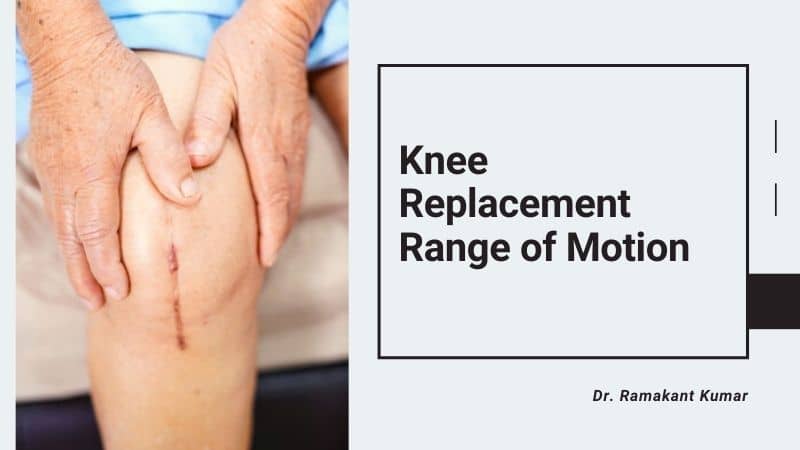Before starting this blog for Knee Replacement Range of Motion, we need to start off by saying that every person is different. Some people are naturally born with more flexion and extension in their knee joints, while some people have complications or severe osteoarthritis degradation to overcome, some people may experience knee stiffness, and so forth.
In fact, one of the best indicators of your knee range of motion after surgery is your Range of Motion before surgery.
A completely straight, unflexed knee joint will measure 0° of flexion. A fully bent knee will maximum out at about a full range of motion of 135° degrees of flexion.
As a general rule, 120 Degree Knee Flexion will allow you to carry out most normal activities. For daily living, a minimum flexion of around 105°-110° is required. Here’s the approximate range of motion flexion required for everyday activities:
- 65° to walk
- 70° pick an object off the ground
- 85° to climb upstairs
- 95° to stand from a sitting position
- 105° to tie shoelaces
- 115° (or greater) to squat or sit cross-legged
- 125°+ covers most activities. However, squatting or sitting on your heel may always prove challenging.
Now let’s look at the ideal Knee Replacement Range of Motion post-surgery, based on the research done on Knee Surgery Patna patients.
Contents
Knee Replacement Range of Motion: Post Surgery
Not only do people have different ROM potentials, to begin with, people also heal at different rates. With that in mind, here is the Knee Replacement Range of Motion, based on studies of some total knee replacement patients.
Stage 1 (0-2 Weeks)—65-90° flexion. This amount of flexion allows for walking without any assistance, standing, and some stair climbing (likely with support). Before you leave the hospital, your doctor will be looking for flexion as close to 90°.
Stage 2 (2 to 6 Weeks)—115° flexion. At this point, you should have made noticeable improvements from your early recovery days. This means moving around normally, bending to the ground, sitting down, and even tying shoelaces!
Stage 3 (12 Weeks +)—A goal to hit 115°- 120 Degree Knee Flexion or greater should be the aim. The timeframe for this varies but should be consistently working towards. A flexion of 125° is great and 135° is excellent (whether you’ve had a joint replacement or not!).
Throughout each stage of the Knee Range of Motion Chart, it’s important that you keep working on your surgical knee and artificial knee prosthesis. The first 3 months of your recovery are critical for working out your new knee to gain back flexibility and movement.
If you stay idle, inconsistent, or not fully committed to gaining back range of motion, your knee may become stiff. If your knee becomes stiff, you risk the need for revision surgery and a joint that will cause lifelong issues.
You Might Refer Reading to Joint Replacement Patna
What Not to Do After Knee Replacement?
Post-Total Knee Replacement Surgery, you will have to take some precautions like how much walking or How Far to Walk After Knee Replacement is required.
Here are some Things You Can’t Do After Knee Replacement Surgery:
- Don’t cross your legs
- Don’t kneel and place anything behind your knees
- A pillow or any item for that matter should not be placed behind the knees
- If you require elevation and/or support under the operative leg, it is to be placed under the heel
- You should not torque or twist on your new knee
- You also have to avoid running, trekking, and playing contact sports like football, cricket, etc.
How Much Walking After Knee Replacement?
Post knee replacement surgery, physical therapy, and exercise are important for quick recovery. And the best way to start exercise is by doing brisk walking. You should start with a walk of half an hour at least a couple of times daily.
How Long Does Pain Last After Knee Replacement?
Knee Replacement pain generally lasts for 1-2 weeks post-surgery, depending on the age, gender, and physical strength of the person. However, generally for old patients, the knee replacement pain may last for months.
The Bottom Line
The success rate for knee replacement surgery is high, but it’s essential to have some realistic expectations about your knee.
Most people experience a reduction in pain and stiffness after knee surgery, and they have increased mobility. However, the artificial knee is unlikely to function at the same level as a healthy, natural knee.
According to Dr. Ramakant Kumar, Best Doctor for Knee Replacement Surgery in Patna – Knee Replacement Surgery, as well as enabling you to be more active, have a positive impact on your energy levels and social life too.
In addition to that, in the long term, the implant alone will not keep you mobile. To get the best value from it, Recovery from Knee Replacement at Home is necessary.
For that you will need to:
- exercise regularly
- maintain a healthy weight
- attend all follow-up appointments and follow the treatment plan as the doctor recommends
Now, we hope that you have understood about Knee Replacement Range of Motion post-surgery. If you have any queries regarding this blog, you can connect with us through the comment section box below.
Till then, stay tuned, as we will be back with more such beneficial blogs………….




